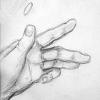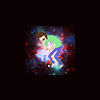I don't really understand why that isn't already perfect, at a glance I can tell the depth.
If it gets darker+darker as it gets deeper, eventually it will be black, most people understand that black means it's so deep that no light gets down there.
Reading this made think, if you really wanted to add so many layers. What you could essentially do is have different world maps all linked together. For example in reference to that image in which the tiles get darker as the area gets deeper, it could then eventually just be pitch black. A player could then jump through that to realize the player is now on just a lower layer. Its pitch dark so they would need some lighting.
ex.
tile layer 1 _ _ _ _ _ _ _ _ _ _
tile layer 2 _ _ _ _ _ _ _ _ _ _ _ _
tile layer 4 _ _ _ _ _ _ _ _ _ _ _ _ _
tile layer 5 _ _ _ _ _ _ _ _ _ _ _ _ _ _
so on that little representation there, layer 5 from a top down view would be pitch dark and could potentially be just a endless void. This is all part of game map. When the player goes through layer 5 and jumps through that little entrance there.
player lands on new game map
tile layer 5 _ _ _ _ _ _ _ _ _ _ _ _ _ _
tile layer 6 _ _ _ _ _ _ _ _ _ _ _ _ _ _ _ _
tile layer 7 _ _ _ _ _ _ _ _ _ _ _ _ _ _ _ _
tile layer 8 _ _ _ _ _ _ _ _ _ _ _ _ _ _ _ _
with such a method, you could potentially have plenty of layers, you would essentially have players just jumping through different game maps. If done right, getting layers pre-loaded and what not, it could be sync seamlessly with as much depth as you need.








